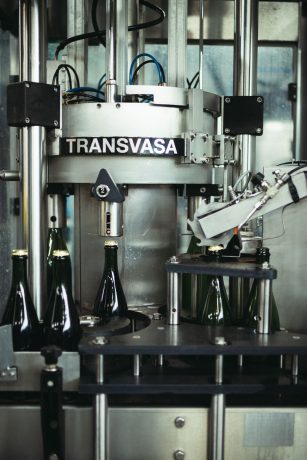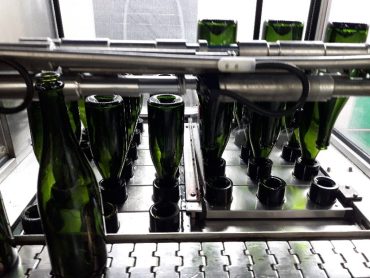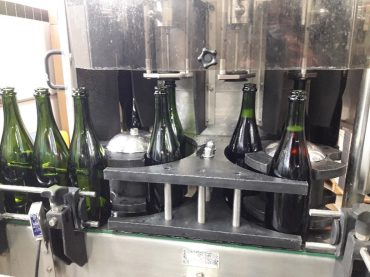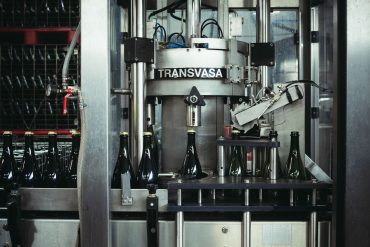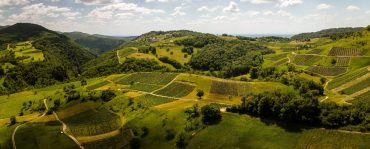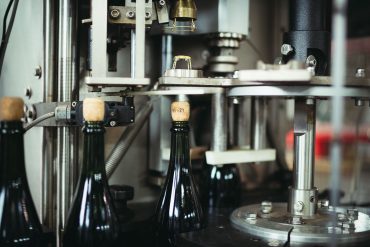The Bugey Terroir
Discover the main grape varieties used to make Bugey wines, the characteristics of the Bugey vineyard and the methods used to make these wines. Located in the south of the Ain department, with the Jura to the north and Savoie to the east, the Bugey AOC is in the mountainous south-eastern part of the Ain department and extends north-eastwards. A modest 500-hectare vineyard, it extends over three distinct areas, lending the wines a unique identity and reflecting 3 terroirs: Cerdon, Manicle and Montagnieu.
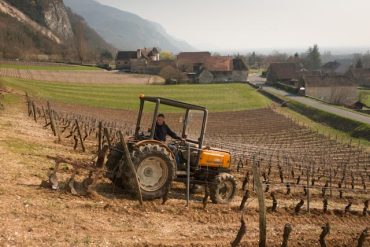
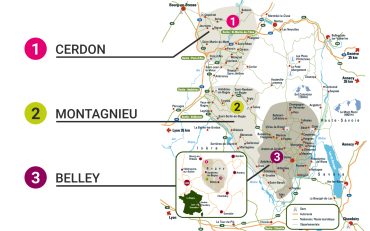
A terroir with a unique identity
Cerdon, Montagnieu and Manicle
CERDON
Located between Belley and Bourg-en-Bresse, the Cerdon wine-growing region has an extremely rugged terrain in the picturesque Cerdon valley. The vineyards thrive at altitudes ranging between 300 and 550 metres with some of the slopes being exceptionally steep. Here, a delightful very aromatic semi-dry fully sparkling rosé wine is made with a modest alcohol content of just 7-8°. The grape varieties authorised in the production of Bugey Cerdon are Gamay and Poulsard, which have featured in the list of aromatic grape varieties since 2004.
MONTAGNIEU
Located 20 km west of Belley, overlooking the Rhône River, the Montagnieu hillside is a truly magnificent location that spans three municipalities – Briord, Montagnieu, and Seillonnaz. The area is known for its steep slopes that are difficult to work. The majority of the vineyard’s yield is devoted to producing sparkling wine using the traditional method: Bugey Montagnieu Brut. There are also two other lesser-known but noteworthy productions: Roussette du Bugey Montagnieu made with the Altesse grape, and Bugey Montagnieu made with the Mondeuse grape.
MANICLE
Bugey Manicle wines are crafted in the Manicle lieu-dit (municipalities of Cheignieu-la-Balme and Pugieu) on a south-facing terrace set against a cliff at an altitude of 300 metres. The Manicle still wines are made with Chardonnay grapes for Bugey Manicle white wines and Pinot Noir grapes for Bugey Manicle red wines.
Bugey’s grape varieties, a varied selection
The very varied predominantly limestone soil is mainly composed of scree found at the base of hills and cliffs that is either clay or gravel due to their glacial origins.
In this beautiful, rugged region known to geographers as “southern Jura”, the vines grow at altitudes of between 220 to 550 metres, allowing the precious grapes to flourish and providing the perfect conditions for the production of Bugey wines. A total of 11 grape varieties can be used to make Bugey wines.
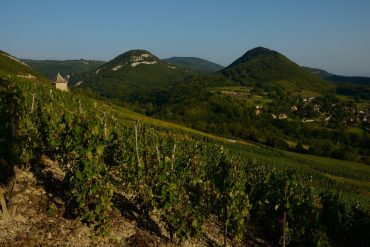
Secondary grape varieties
Poulsard, a black grape variety that originates from the Jura region, is sometimes used in the production of Cerdon and Bugey rosé wines, lending them structure and a touch of spice. For the creation of Brut and Bugey white wines, a blend of Aligoté, Mondeuse Blanche, Pinot Gris, Jacquère, and Molette grapes is typically employed.
Five main grape varieties
One of the main white grape varieties consists of Chardonnay, known for its subtle mineral taste and hints of pear, pineapple and citrus fruit. Another noteworthy variety is Altesse, which produces Roussette du Bugey AOC wine and which stands out with its astonishingly diverse range of aromas, including quince, white truffle, and sultanas.
As for the reds, the Gamay is fresh, light and pleasant to drink with hints of red fruit. The Pinot Noir is discreet on the nose, but surprises on the palate with its full-bodiedness and aromas of blackcurrant, cherry, pepper, and a subtle hint of humus.
Mondeuse, the historic grape variety native to the Savoie region, surprises with its aromas of the south: a nose of cherry and blackcurrant, a touch of refreshing bay leaf and liquorice and occasionally violet accompanied by tannins.
Treasures of the Bugey AOC, Mondeuse and Altesse are indigenous grape varieties that contribute to the identity of the region’s wines, adding precision and refinement to each production.
The wine-making method for Bugey wines
Making wine requires a precise set of skills that the winegrowers have turned into an art form. The method of pressing, settling, and fermentation, known as vinification, is what gives the wines their unique personality. It demands a combination of passion, discipline, and a systematic approach: the three-fold foundation for crafting exceptional wines.
The process of making white and red wines is largely the same. After harvesting, the white grapes are immediately pressed, while the red grapes (Mondeuse, Gamay and Pinot Noir) are macerated briefly in vats to extract the colour from the berries. However, if the red grapes are being used to make Bugey rosé, they will be pressed directly the same way as the white grapes. The result of pressing is the must, a cloudy liquid still full of suspended plant particles which are later separated by the settling process.
Once the juice has become clear and is free from residue, it is time for the crucial fermentation phase. A second fermentation phase may follow and is necessary for red wines. This malolactic fermentation helps to reduce acidity, refine the wines, and produce more delicate, buttery aromas The wines are then separated from the sediment (dead yeast particles). Bugey wines are matured in vats and occasionally in barrels. The time required for this ageing process varies according to the winegrower’s preferences and contributes to each estate’s distinct character, beyond the impact of the terroir on the wines. Finally, the wines are filtered and bottled, ready to be consumed!
The traditional method
Bugey AOC fully sparkling and semi-sparkling wines are obtained through a process of secondary fermentation in the bottle. It involves adding a so-called “liqueur de tirage”, which is a mixture of still wine, sugar and yeast, and a minimum maturation period of 9 months on fine dregs to achieve the desired effervescence. This period can be as much as 12 months for wines with the “Montagnieu” additional geographical denomination. These wines generally have floral aromas.
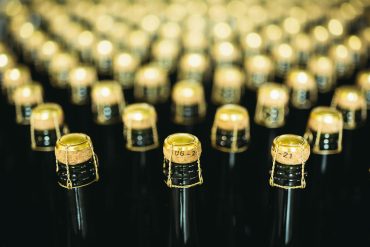
The ancestral method, the strength of the Bugey Cerdon PDO
The strength of the Bugey Cerdon PDO lies in its use of the unique and original ancestral wine-making method.
This ancestral method preserves the aromas and vitality of the grapes. It involves the production of a partially fermented still wine. The winegrower stops the fermentation process by refrigerating the wine at a temperature slightly below freezing. This induces a dormant state in the yeasts present in the wine. The wine is then gently filtered and bottled without any need to add liqueur or yeast.
The bottles are stored horizontally at a slightly positive temperature to restart the fermentation process. This step, known as “prise de mousse,” aims to reactivate the dormant yeasts which have become inactive due to the cold temperatures, enabling them to continue to turn residual sugars into alcohol and carbon dioxide. A second filtration process then eliminates the dead yeast cells. This procedure, referred to as the “transfer operation,” involves emptying the bottles, cleaning them, and filling them again with the filtered wine without adding any “liqueur d’expédition”.
The wines produced under the Cerdon additional geographical denomination are delightful aromatic, fully sparkling rosé wines. The terms “méthode ancestrale” must be indicated on the label. They are made using a unique process that involves slowing down and stopping fermentation with cold temperatures. This technique helps to retain a significant quantity of fermentable sugars. The partially fermented must is then bottled and continues to ferment for a minimum of 2 months (prise de mousse). This unique product offers a distinct aromatic profile of red fruit with a relatively low alcohol content (generally between 7% and 9%) and a fermentable sugar content of between 22 g per litre and 80 g per litre. This produces an abundant and delicate foam.
